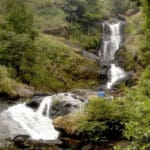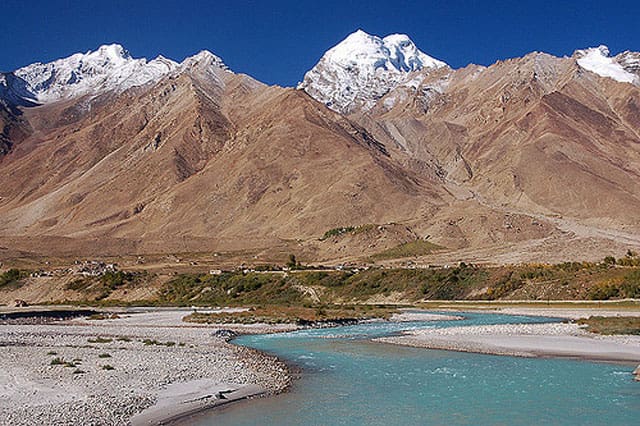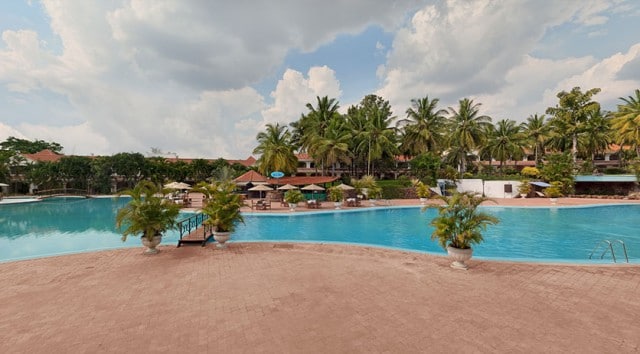Namdapha National Park, situated in the northeastern state of Arunachal Pradesh, India, represents a unique blend of cultural heritage and natural beauty, offering a sanctuary for a diverse range of species and ecosystems. This sprawling park, encompassing an area of 1985 square kilometers, is not just a testament to the richness of the Eastern Himalayas but also a paradise for nature enthusiasts, adventurers, and researchers alike. Delving deeper into the park’s offerings, history, ecological significance, and the experience it promises, one can truly appreciate the magnificence of Namdapha.
The Biodiversity Haven
Namdapha National Park is distinguished by its remarkable altitude variation, ranging from 200 meters to over 4500 meters above sea level. This variation fosters a diverse range of habitats, from tropical rainforests in the valleys to alpine meadows and snow-capped peaks. It is home to a wide array of fauna, including several rare and endangered species. The park is renowned for its big cat diversity, being one of the few parks in the world to house the four big cat species – the tiger, leopard, snow leopard, and clouded leopard. Apart from these, Namdapha is a sanctuary for other mammals like the Asiatic black bear, red panda, and the elusive Arunachal macaque.
The flora is equally mesmerizing, with the park housing a rich variety of plant species, including several rare and endemic ones. The dense forests are comprised of a mix of tropical, temperate, and alpine vegetation, with towering Dipterocarp trees dominating the lower elevations, giving way to oaks, rhododendrons, and conifers as one ascends.
A Trekker’s and Bird Watcher’s Utopia
For trekkers and nature lovers, Namdapha offers an unparalleled experience. The park’s diverse terrain allows for treks ranging from relatively easy walks along the Noa-Dihing River to challenging hikes up to the higher elevations. These treks not only offer a chance to witness the park’s rich biodiversity but also provide breathtaking views of the lush landscapes and snow-capped Himalayan peaks.
Bird watchers find Namdapha particularly enchanting, with the park being home to more than 400 bird species, making it one of the prime bird-watching destinations in Asia. The diverse avifauna includes several rare and endangered species like the Rufous-necked Hornbill, Great Hornbill, and the White-winged Wood Duck. The symphony of bird calls mingling with the rustle of the forests creates a serene yet exhilarating experience for visitors.
Cultural Encounters and Culinary Delights
The area surrounding Namdapha is inhabited by a mosaic of indigenous tribes, including the Lisu, Singpho, and Chakma communities, each with their unique cultures and traditions. Visitors have the opportunity to interact with these communities, learn about their way of life, and experience their warm hospitality. The local markets are a riot of colors, offering a glimpse into the rich cultural heritage of the region.
The cuisine of Arunachal Pradesh is a reflection of its cultural diversity, with each tribe contributing its unique flavors and dishes. Traditional meals often include rice, bamboo shoots, and a variety of meats cooked with indigenous herbs and spices, offering a distinct culinary experience.
Conservation Efforts and Challenges
Namdapha National Park plays a crucial role in the conservation of the Eastern Himalayan biodiversity. However, the park faces several challenges, including poaching, illegal logging, and human-wildlife conflicts. Efforts are being made by the government and various NGOs to address these issues, with initiatives focusing on anti-poaching measures, habitat restoration, and community-based conservation projects to engage local communities in the park’s conservation.
Planning Your Visit
Visiting Namdapha requires some planning, given its remote location and the need for permits. The nearest airport and railway station are in Dibrugarh, Assam, from where visitors can travel to Miao, the gateway to the park. Accommodations within the park are limited to forest rest houses and eco-friendly campsites, offering a rustic and immersive experience. It’s advisable to book these in advance, especially during the peak tourist season from October to April.
Embracing the Wilderness
A visit to Namdapha National Park is not just a journey through a stunning landscape but an adventure that challenges and rewards. It’s a place where the silence of the forests is broken by the roar of a distant tiger or the call of an exotic bird, where each turn on the trail offers a new discovery, and where the night sky is a canvas of stars, unmarred by city lights.
Beyond Namdapha
The region around Namdapha is dotted with other attractions, including the picturesque town of Miao, offering insights into local culture and history. Further exploration leads to the beautiful Deban, offering camping sites with panoramic views of the surrounding forests and rivers, providing a tranquil retreat for those looking to escape the hustle and bustle of city life.
Conclusion
Namdapha National Park stands as a beacon of natural beauty and biodiversity conservation in the Eastern Himalayas. Its lush landscapes, rich wildlife, and the opportunity for adventure make it a must-visit destination for anyone looking to explore the unspoiled beauty of Arunachal Pradesh. Whether it’s trekking through its verdant forests, bird watching, experiencing the local culture, or simply soaking in the tranquility of nature, Namdapha offers an experience that is both exhilarating and humbling. As we strive to protect and preserve these natural wonders, Namdapha continues to inspire and remind us of the incredible diversity and resilience of the natural world.



















